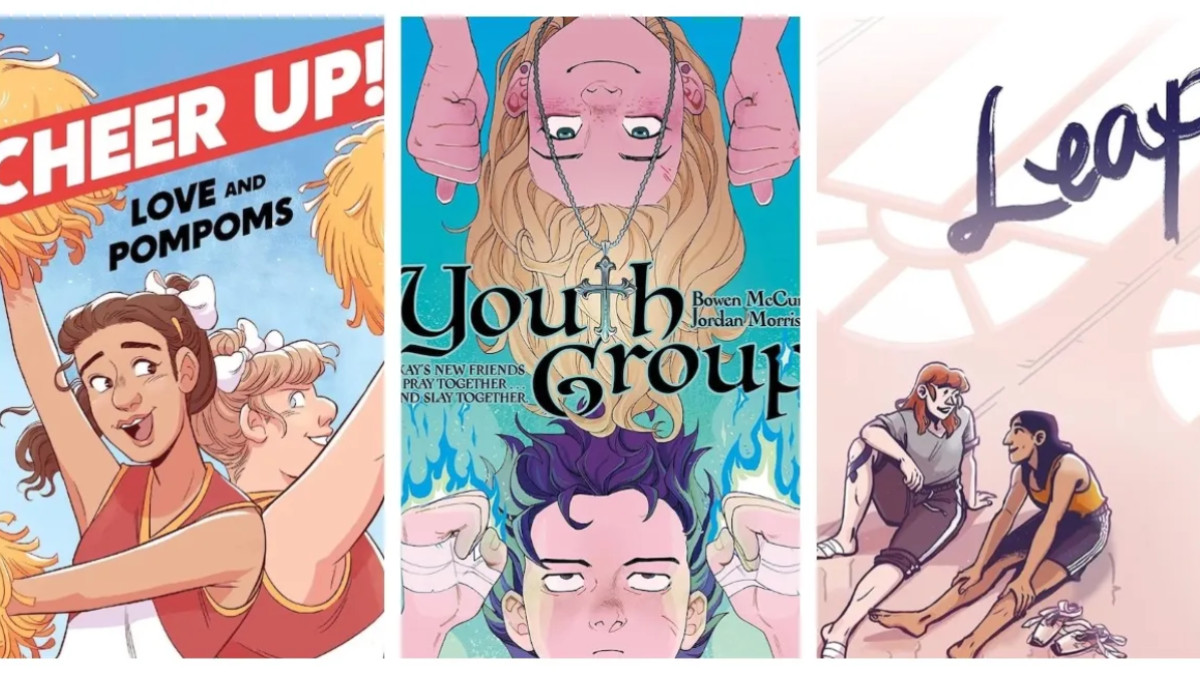In January, Ahoy Comics is taking a trip back in time, and The Mary Sue has the exclusive details about its upcoming vintage sci-fi series.
Howl is a five-issue limited series written by Alisa Kwitney and illustrated by Mauricet. The story is set in Greenwich Village in the late 1950s, where creatives are being slowly taken over by alien spores but no one knows. Not even the Scylla, a boys’ club of sci-fi writers and editors dreaming up life on far-away planets, realize what’s happening all around them.
As McCarthyism sweeps the rest of the country, 23-year-old Ziva Rodblatt has more immediate concerns: namely, preventing her mom from discovering that she’s living with her boyfriend, Bert, out of wedlock. Then Bert basically gets a personality transplant after he starts following celebrity therapist Myrtle Morel. Ziva is particularly disturbed that he suddenly seems to love cream of mushroom soup and he keeps sneaking out before dawn for secret meet-ups.
But Bert isn’t the only person in the village acting strange because of Myrtle Morel. Ziva is just one proto-feminist beatnik college dropout, and now she’s at the forefront of fighting an alien invasion. Yikes!

“I wrote this series for anyone who loved the 1959 Roger Corman movie Bucket of Blood and thought, When is someone going to do a feminist version of the ‘frustrated beatniks on a rampage’ trope?” said writer Alisa Kwitney in the announcement.
“This may be my most personal work yet, as it is loosely based on my mother’s stories and letters about the period when she lived in the Village with my father, the science fiction writer Robert Sheckley (former Omni editor, author of The Tenth Victim and unacknowledged influence on Douglas Adams),” Kwitney continued. “Mixed in with all this family lore is my lifelong love of pod-people stories, especially all versions of Body Snatchers, Starman and The Thing.”
Artist Mauricet said, “This is not my first collaboration with Alisa, but it’s certainly our most accomplished and ambitious work so far. As an artist, I love to be dragged out of my comfort zone and be challenged—but boy, was I in for a real adventure here! Trying to be accurate and nail this weird time period between 1950s conservatism and the beginning of the swinging ’60s without falling into clichés was really something.
“Howl is science fiction horror, a genre I wasn’t at ease with at first—but Alisa convinced me I was capable and turns out she was right. I do have this genre in me and, without even knowing it, my main influence was probably John Carpenter’s The Thing. How convenient, as you’ll see if you give our book a try!” Mauricet continued.
The Mary Sue can reveal main cover art for Howl #1 (above) and #2-#4 (below), all by Mauricet.



“The Fifties have this reputation, probably from sitcoms, as staid, conformist, prosperous—oh, man, it’s definitely from sitcoms, because you couldn’t write Naked Lunch in the Leave It to Beaver house,” said Ahoy Comics editor Tom Peyer. “In Howl, Kwitney and Mauricet reveal the essential truth about this fascinating time: that it was as much a bubbling cauldron of change and fear and danger and weirdness as any other moment in American history.”
Described as The Marvelous Mrs. Maisel meets Invasion of the Body Snatchers, Howl will lean into the widespread fears of people living in the 1950s. Many of these were rooted in racism, homophobia, and sexism, and are still perpetuated today.
“You might say I’ve repurposed the ‘alien hidden among us’ trope to reflect my own concerns. Back in the fifties, the prevalent fear was of a fifth column of nefarious outsiders pretending to be one of us. After spending years dealing with a family member’s dementia, I wanted to explore the psychological horror that comes from watching someone change so profoundly that they seem like a stranger,” said Kwitney. “Since I can’t take horror straight up, I like to serve it with humor—the jello shot method.”
Mauricet added, “This series sums up without a doubt for me the beauty and magic of what a real collaboration should always be. Alisa and I—we ‘click!’ It all seems like a dance where each of the dancers knows the steps the other one is going to take. And working together under the Ahoy banner again makes me feel like this is the best part of my 30-something-years long career so far. I hope you as a reader will enjoy the ride too. I sure do.”
Howl #1 will be available at your local comic shop and digitally on January 15, 2025. The following issues will be released monthly.









Published: Oct 1, 2024 10:38 am